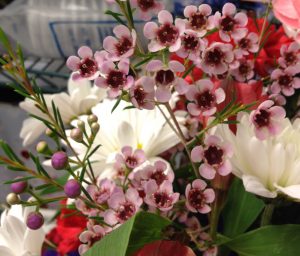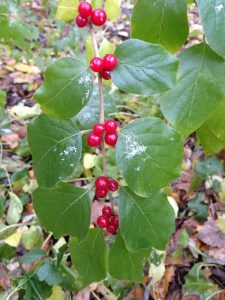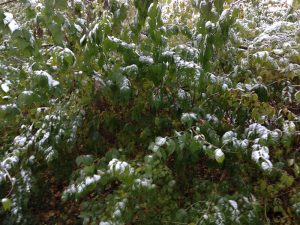Q. I recently received a flower bouquet with some pretty blossoms I do not recognize. Do you know what these might be?
A. Known as wax flower in the florist trade and botanically as Chamelaucium, this plantis native to Australia. The star-shaped petals come in shades of white, pink and lavender and some bi-colors. The needle-like, citrus-scented foliage makes a nice filler material for floral arrangements. This shrubby plant is hardy only to about 20 degrees F, so you’ll only be able to enjoy it as a cut flower in our area.
Q. The woods around our home are loaded with a shrub with red berries. Do you know what this plant is and whether the berries are edible?
A. That would be one of the Asian honeysuckle species, a group of invasive, non-native honeysuckles that have become rampant in recent years. Honeysuckle fruits are not documented to be poisonous to humans or pets, although one occasionally hears tales of illness. Birds love the red berries, which is part of the problem; the birds spread the seeds everywhere.
The seeds then germinate and start new shrub colonies. The Asian honeysuckles are early to green up in spring and the last to lose their green color in the fall. It is best to try to remove the plants while they are still young. Repeated cutting and digging may work, but the plants often grow back with a vengeance. For more established plants, cutting the trunks and carefully painting the stump with brush killer herbicide may provide some control. Please read the herbicide label carefully and follow all label directions and precautions to avoid damaging desirable plants nearby. The Indiana Department of Natural Resources has an excellent publication on how to identify and control the invasive honeysuckles, as well as some suggested alternative shrubs to plant in the home landscape, http://www.in.gov/dnr/files/Bush_Honeysuckle.pdf. For more information on invasive plants in Indiana, visit http://www.invasivespecies.IN.gov.


